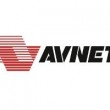

Avnet, Inc, a global technology distributor, released an add-on module and reference design for its MicroZed™ Industrial IoT Kit, bringing Trusted Platform Module (TPM) security capabilities for platform integrity, (more…)
December 2, 2016
Posted by: Avadhoot Patil

HomeGrid Forum has announced that Xingtera‘s XT1800 G.hn chipset has been awarded its prestigious G.hn certification, recognising a high-performance product that allows networking over any form of cabling at a rate of 1 Gigabit per second – a direct result of Xingtera’s ongoing dedication to the development of the chipset. (more…)
November 30, 2016
Posted by: Avadhoot Patil

In a world where the number of communication networks continues to increase, requirements for information transmission are also changing. Data transmission must be mobile and flexible while using as little energy as possible. (more…)
November 29, 2016
Posted by: Avadhoot Patil

Nobody can deny that data is the key to a business’s future. As the Internet of Things (IoT) is rolled out through new devices and networks, data collection and analysis is growing at a rate never before seen. (more…)
Posted by: Avadhoot Patil

As the world’s population grows and urbanisation increases, society will increasingly rely on communications technology to help overcome its many challenges. (more…)
November 25, 2016
Posted by: Avadhoot Patil

Dialog Semiconductor plc, a provider of integrated power management, AC/DC power conversion, solid state lighting (SSL) and Bluetooth® low energy (LE) technology, has announced the availability of its latest Apple HomeKit development kit. (more…)
November 24, 2016
Posted by: Avadhoot Patil

HID Global®, a provider of secure identity solutions, has announced new solutions that secure Internet of Things (IoT) applications to improve the convenience and effectiveness of monitoring heating and cooling systems, along with a variety of manufacturing and safety equipment. (more…)
Posted by: Avadhoot Patil

Huawei, a global ICT solution provider, has joined the MulteFire Alliance, an independent organisation dedicated to the promotion and development of MulteFire technology. (more…)
November 23, 2016
Posted by: Avadhoot Patil

Event date: November 29-30, 2016
London, Vinelake
Exploring the relevance of IoT to those involved in passenger experience and e-enablement. From leveraging beacon technology, to empowering staff with wearables and using digitally enabled maintenance, discover the wealth of opportunities, IoT offers for airlines and airports to gain a competitive edge. (more…)
Posted by: IoT global network

It is evident that the social, economic, and political environment influence the demand for new technologies and innovations. Technology has taken giant strides forward in the last decade. (more…)
November 22, 2016
Posted by: Avadhoot Patil